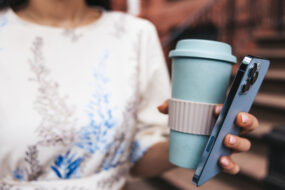That’s a wrap! What to do with your soft plastics
Soft plastics recycling has been temporarily paused, leaving households unsure how to sustainably manage waste. Here’s what to do now.
We all want to leave a cleaner and healthier planet for the next generation.
An important step in achieving this is to reduce soft plastics heading to landfill.
But with the sudden suspension of the REDcycle scheme – Australia’s largest soft recycling service – Australians have been left with few options for responsibly managing a large portion of their waste.
“Soft plastics are a material that is difficult to recycle,” How To Save Our Planet podcast co-host Lottie Dalziel says.
Australians use roughly 70 billion pieces of soft plastics (food wrappers and plastic bags, for example) every year.
The REDcycle program allowed consumers to drop their soft plastics at supermarket collection points to be recycled and turned into another product.
“Soft plastics recycling was a great service that lots of Australians used, but at the end of the day, recycling isn’t the answer; reducing our consumption of plastics is,” Lottie, who is the 2023 NSW Young Australian of the Year, says.
What happens to soft plastics now?
Aussies are now urged to put their soft plastics into the regular bin, not with the rest of their recycling.
This means there will likely be an increase in waste, Precious Plastics Melbourne co-founder Kayla Mossuto says.
“We can’t just wait idly and send our soft plastics to landfills, or hoard them,” Kayla says.
“The temporary closure is a disappointing result for many Australian households but for those of us who were diligently collecting our soft plastics for recycling, this waste volume increase will hopefully contribute to a collective shift in thinking.
“In the meantime, we can reduce our consumption of soft plastics and focus on all the actions we can take to help lighten our impact on the planet.”
- Cut it down: 6 ways to reduce food waste
How to reduce your soft plastics consumption
Do a bin audit
“As consumers, we now need to be more mindful in the way we consume,” Kayla says.
A bin audit can give you a snapshot of what you consume – and a good estimate of how much you waste.
“From here, consumers can begin to devise a plan for avoiding soft plastics where possible,” Kayla adds.
Make small changes
It’s difficult to remove all soft plastics from your life, but making small changes to your everyday actions can have a big impact.
Kayla suggests starting with reusable shopping and produce bags on your shopping trips.
If you leave your bags at home?
Use the paper mushroom bags at the supermarket instead.
When shopping in the middle aisles, Lottie recommends choosing your products based on how they are packaged.
“Opt for items packaged in cardboard, glass or aluminium over soft plastic packaging,” she says.
Take a stand
The best way to prevent a build-up of soft plastics is by encouraging big businesses to take action and innovate.
“Businesses and consumers alike now need to focus on reducing our soft plastic usage,” Kayla says.
“I encourage consumers to start asking businesses … to switch to more sustainable options.”
- Get it right: How to avoid greenwashing
Written by Alexandra Feiam.






